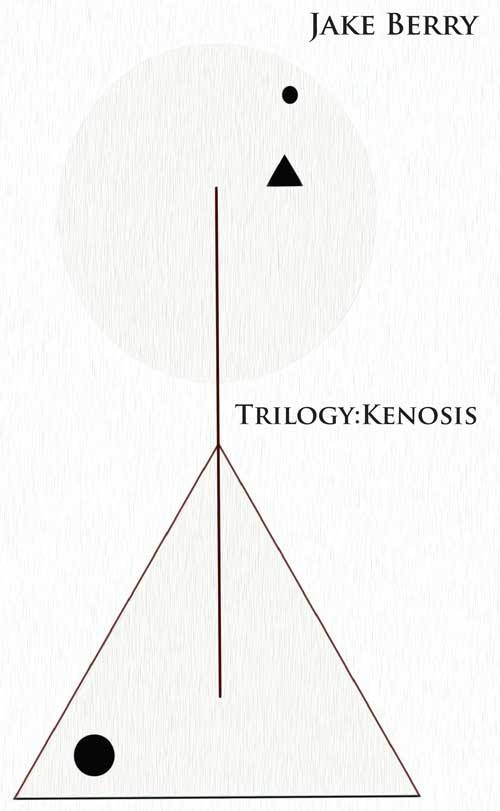

notes after Berry’s Trilogy: Kenosis

Kenosis is a term better known to theologians than to poetics theorists. It means, “an emptying.” When used in reference to Jesus (Philippians 2:7) it (heauton ekenose — “emptied himself”) refers to the self-emptying of Jesus’ own will to become entirely receptive to God’s divine will. With reference to “the Logos,” to “the Word” (John 1:1-14), it has been taken to refer to an “emptying out” of significance, a depotentiation of “the Word,” resulting in a materialism. Thus the creative Word of God —
(Genesis 1:3) “God said, Let there be light; and the light began.”
(Psalm 32:9) “He spoke, and they were made, he gave his command, and their frame was fashioned.”
(Sirach 42:15) “Recount we now what things the Lord has made; his visible creation be our theme; nothing he has fashioned but hangs on his word.”
— is no longer endowed with the power to create. And thus the “Logos,” the “Word,” thus “the word,” is disendowed of its semiotic function, disendowed of its metaphysics. Thus we see a humbling of the man, and a humbling of the word.
Applying kenosis to poetics (to a poetics strategy) one can conceive of a radical materialism (“an emptying”) whereby words are the analogue to the pigmented matter of the painter, and thus the look of the word and the sound of the word (its physicalities) take precedence over the meaning of the word.
The correspondence of physical values (such as sound — rhyme, assonance, alliteration — and such as appearances) between words, is part and parcel of the words’ communicative value, and are the province of the poet (as he is able to make of these meaningful elements the complement to his discourse).
(It is the province of the poet, as it is to the philosopher, to be considerate of the relation of the structure of language to the process of thought (and to the nature of reality).)
The poet works on two levels: the concrete physicality of the words, and the abstract senses of the words — their meaningfulness as signs. This determines the overall communicative value of his discourse (— itself determined by his intentions . . . and their interpretations).
In what sense, then, kenosis, where concerns Trilogy: Kenosis?
Enter Jake Berry. Like Blake (— I am not the first to mention Berry and Blake in the same sentence), he is a poet both terrestrial and celestial. He is a visionary. Like Rimbaud, he is the poet of the senses. He is a poet in quest of poetry’s sacré-cœur. But this “sacred heart” does not show itself too readily — like René Daumal’s Mount Analogue it will reveal itself only to those who intentionally seek it. Furthermore it cannot be seen but is known only by frisson. And as with Daumal’s Mount Analogue, the most deadly sin is pride.
The sense of this “kenosis” is an emptying of pride. A releasement. A humbling. A humbling before the task — as a knight on his knee before his sword.
In Daumal’s Mount Analogue we are introduced to the precious stone —“a curved crystal” — the “peradam,” which because of its unique index of refraction can curve and uncurve space. Mount Analogue itself is surrounded by a shell of curved space, “a closed ring of curvature,” which causes anomalies in cosmic perspective.
I see an analogue to this unique index of refraction in Berry’s language: In his heroic diction, in his lyricism, in his anomalies in cosmic perspective. Or, let me put it this way: how does one say what is beyond language —
Here is knowledge
bifurcated and splayed upon a tree
The feast has seized us
down in our joints
and inscribed her gray miracle
for the last thing
for those that thrive on last things
for the animal mirror
afraid to look you in the face
In the pleroma of nothingness
all knowledge is revealed as fakery
as sublime ornament
as gorgeous foolishness
Notice: there is no failure of nerve here. On the contrary, the poet is heartened. Increased. The poet recounts a vision in which “the pleroma” (from the Greek, “that which fills”) is revealed to be a “nothingness.” The poet, in his kenosis (in his emptying — the releasement, the humbling, in his nothingness) sees that which he has released for what it is: fakery, ornament, foolishness. And only in the kenosis, is the vision of the pleroma possible.
The books have been swept clean of
of words and images
The pages come to life
God, I am with you
in no man’s land
For he who could not discover
the foundations of the house
For she who struggled
in the abyss of the Trinity
For he who fought hand to hand
with a legion of belligerent angels
For she who wept when the tree
exploded in flames
For he who drowned in her tears
For she who buried him,
summoned his breath and
with a kiss brought him back
Heaven is empty
and emptiness is a call
The word
has shaken us
free
with an essential,
forbidden
summoning
more than knowledge
more than life
a music
one step beyond
I would call this sort of poetry, “transformative.” Because it is concerned with change — a change that is the rising to another level. An ascent. And because it knows (and attempts to depict) consciousness as a lived awareness, as an embodied awareness.
Jake Berry
ISBN: 978-1-944884-55-0 (paper) 58 Pages
Gregory Vincent St. Thomasino is the founding editor of E·ratio. He is the author of The Logoclasody Manifesto.